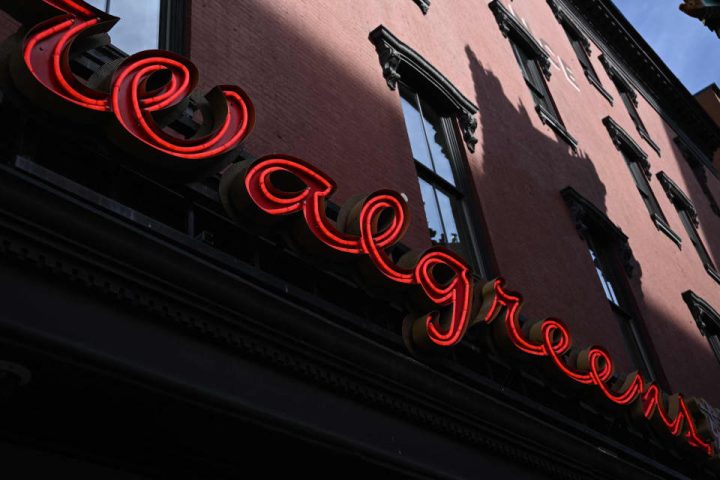I’ve been looking ahead to Thursday’s release of the Beatles’ “new” song “Now and Then” — the work John Lennon recorded in demo form during the late ’70s that has now been turned into a full Fab Four collaboration.
At the same time, I’ve been thinking about that glorious 1993 Steven Spielberg film “Jurassic Park,” which detailed how you could make a new dinosaur out of old genetic material.
It’s not as odd a connection as it may seem.
There are parallels between taking the bones of an unfinished song and using the latest technology to turn it into something “new.”
As Jeff Goldblum’s pesky character in “Jurassic Park” observes, “Your scientists were so preoccupied with whether or not they could [do this], that they didn’t stop to think if they should.”
In other words, why didn’t the Beatles just “let it be,” to quote the title to one of their classic songs?
I say this as someone who’s loved the group since my early childhood, which unfortunately coincided with their split in the early ’70s. The first album I ever purchased was a Beatles compilation. One of my first trips to the movies was to see a double bill of the “Let It Be” documentary and “Yellow Submarine.” When Lennon was murdered in 1980, I was among those New Yorkers who stopped by his apartment building, the famed Dakota, to pay my respects.
Heck, the Beatles are a big part of the reason I became a music critic in my early journalistic career. They were a standard against which I could measure everything.
But the Beatles I cherish to this day are the real Beatles, as in Lennon and George Harrison (who passed away in 2001), plus Paul McCartney and Ringo Starr, both of whom are thankfully still with us.
“Anything cobbled together after the fact is ‘Frankenbeatles’ or Faux Four or whatever term that could potentially apply to Beatles music revived by technological wizardry.”
This is the group that recorded a string of crazily listenable and yet crazily innovative albums — among them “Revolver,” “Sgt. Pepper’s Lonely Hearts Club Band,” “Abbey Road” and the record known as the White Album. And those albums set a new standard not just for popular music, but for music, period.
Anything cobbled together after the fact is “Frankenbeatles” or Faux Four or whatever term that could potentially apply to Beatles music revived by technological wizardry.
It’s been argued that “Now and Then” isn’t exactly “artificial intelligence” Beatles, even though McCartney initially described it as such. As he said, “We were able to take John’s voice and get it pure through this AI, so then we could mix the record, as you would normally do.”
The “Now and Then” demo dates from the same time as when Lennon recorded demos of “Free As a Bird” and “Real Love.” The latter two songs were finished by the remaining Beatles in the mid-’90s and released as part of “The Beatles Anthology” project. However, the team could not pull things off with “Now and Then” because Lennon’s vocals were not able to be separated effectively.
The opportunity to revisit the song came as a result of the Peter Jackson “The Beatles: Get Back” docuseries, which tapped into the latest audio-restoration technology. Work could be done to restore Lennon’s part, while McCartney (on guitar, bass and piano) and Starr (on drums) added new bits. As for Harrison, he contributed electric and acoustic guitar parts during the attempt to complete the song in the ’90s.
“‘We were able to take John [Lennon]’s voice and get it pure through this AI, so then we could mix the record, as you would normally do.’”
Making things more complex: The final “Now and Then” recording also includes backing vocals from other Beatles songs — namely, “Here, There and Everywhere,” “Eleanor Rigby” and “Because.”
I suppose if the song sounds good — or even if it doesn’t — there’s no real harm being done here. And I suspect no one connected to the Beatles is involved in this because they need the money. The group has already sold some 600 million albums worldwide, and McCartney and Starr still tour regularly.
Perhaps it’s just a stab at staying relevant. Or, as veteran music critic and author Steven Hyden told me, “The Beatles are in this fascinating place. They’re still one of the most popular rock bands in the world.”
So just as the Rolling Stones, arguably the Beatles’ biggest rivals, continue to release new music — their album, “Hackney Diamonds,” dropped last month — the Fab Four remain in the game. Even if “Now and Then” represents what’s being billed as the “last Beatles song.”
And yet, I take issue for two reasons.
First, am I the only one who finds something unseemly about “new” music that features two deceased bandmates? Granted, works by artists are often released posthumously, but “Now and Then” wasn’t a song in almost-final form. It’s more a complex collaboration, with dead people.
It’s creepy in the same way as certain other posthumous things, like an Elvis Presley “concert” in which his bandmates accompanied video footage of the singer or a 2012 Tupac Shakur “appearance” at Coachella.
“‘Do we want a world of flesh-and-blood individuals strumming guitars and singing their hearts out, or do we just let the robots take over?’”
Creep factor aside, the bigger question is how far are we going to let technology take us when it comes to music, if not all the arts? As the New York Times asked earlier this year, “Will A.I. replace pop stars?” That was the headline to a story that followed the release of an AI-created song with fake vocals from Drake and the Weeknd.
Do we want a world of flesh-and-blood individuals strumming guitars and singing their hearts out, or do we just let the robots take over? The case that “Now and Then” isn’t true AI stems from the fact we’re hearing Lennon’s actual voice. But I’d hardly call it the Beatles in their natural form.
Of course, I’ll still listen when it’s released, as will just about half the world. Allan Kozinn, a former New York Times music critic and noted Beatles scholar, told me there’s no reason to get worked up about the song.
“To me, it’s neither a complicated or controversial issue. People can like it or not, or consider it part of the Beatles’ real canon or whether it requires an asterisk,” he said. Plus, you can’t ignore the fact that two living Beatles are part of it, he noted.
But to me, the Beatles are most “alive” when we hear them on those old recordings.
I think back to a night from my days as a music critic, when I was reviewing a concert by some rocker whose name I’ve long forgotten. It was at a small venue that kept the crowd warmed up by playing classic rock albums over the speakers. Suddenly, “Sgt. Pepper’s” came on and I was thoroughly swept up by its power, grace and beauty, almost as if I was listening to it for the first time.
By the time the real concert started, I had lost interest. The Beatles had proven themselves once again — they were “there” that night in their true, original form. And that’s how I’d like to remember them, now and then.
Read the full article here







